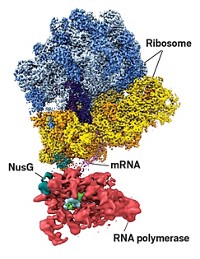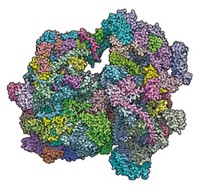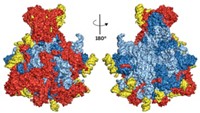Advertisement
Grab your lab coat. Let's get started
Welcome!
Welcome!
Create an account below to get 6 C&EN articles per month, receive newsletters and more - all free.
It seems this is your first time logging in online. Please enter the following information to continue.
As an ACS member you automatically get access to this site. All we need is few more details to create your reading experience.
Not you? Sign in with a different account.
Not you? Sign in with a different account.
ERROR 1
ERROR 1
ERROR 2
ERROR 2
ERROR 2
ERROR 2
ERROR 2
Password and Confirm password must match.
If you have an ACS member number, please enter it here so we can link this account to your membership. (optional)
ERROR 2
ACS values your privacy. By submitting your information, you are gaining access to C&EN and subscribing to our weekly newsletter. We use the information you provide to make your reading experience better, and we will never sell your data to third party members.
Biological Chemistry
Mitochondrial Ribosome Structures Captured
Studies unveil detailed structures of complete human and pig mitoribosomes
by Stu Borman
April 6, 2015
| A version of this story appeared in
Volume 93, Issue 14
Two research groups have obtained the first structures of complete mitoribosomes, ribosomes from mammalian mitochondria, at near-atomic resolution. Ribosomes translate genetically transcribed mRNA templates to synthesize cellular proteins. Most mammalian ribosomes are found in the cell cytoplasm. But mitochondria, the energy-producing organelles of cells, have their own ribosomes. Researchers had previously structurally analyzed the larger of the mitoribosome’s two subunits. Now, some of the same researchers have obtained structures of the complete complex. Venki Ramakrishnan and coworkers at the Medical Research Council Laboratory of Molecular Biology, in Cambridge, England, determined the structure of the human mitoribosome, including 80 proteins and three ribosomal RNAs, at 3.5-Å resolution (Science 2015, DOI: 10.1126/science.aaa1193). And Nenad Ban of ETH Zurich and coworkers determined the 3.8-Å structure of the pig mitoribosome with an mRNA and two tRNAs bound (Science 2015, DOI: 10.1126/science.aaa3872). The structures may help scientists improve antibiotics that target the bacterial ribosome but that have severe side effects, in part because they also interact with the human mitoribosome.





Join the conversation
Contact the reporter
Submit a Letter to the Editor for publication
Engage with us on Twitter